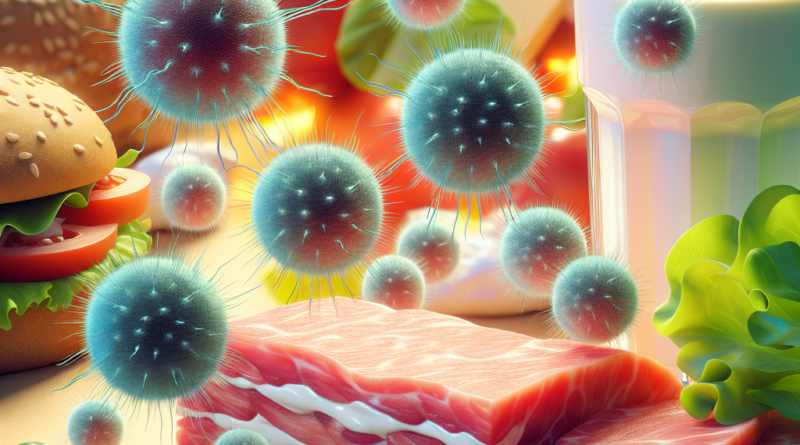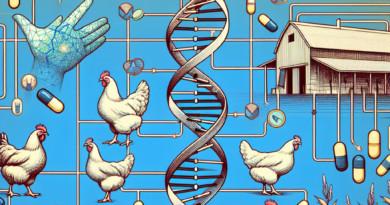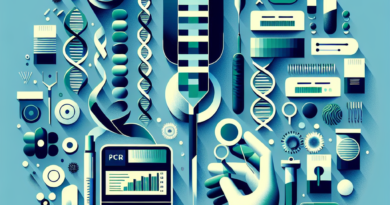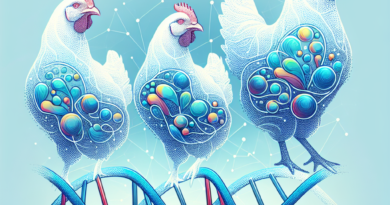Efficacy of ShigaShield™ Bacteriophage Preparation in Reducing Shigella Contamination in Foods
Understanding ShigaShield™
Welcome to our exploration of a cutting-edge scientific study that dives into the realm of food safety and bacteriophage technology. Before we delve into the specifics of the research, it’s crucial to grasp the context and the science behind the techniques employed in this study.
Background on Shigella and Food Safety
Shigella is a genus of bacteria responsible for shigellosis, a disease that causes severe diarrhea and is a significant global health concern. Shigellosis is particularly dangerous for young children and can lead to dehydration and other serious complications. The bacteria are known for their low infectious dose, meaning that ingesting just a few cells can cause illness. This makes Shigella a formidable threat in foods, especially in ready-to-eat products that do not undergo further cooking.
One of the most concerning aspects of Shigella is its increasing resistance to antibiotics, which has been recognized as an urgent threat by health organizations like the CDC. This resistance complicates treatment and control measures, underscoring the need for alternative methods to manage Shigella contamination in foods.
The Role of Bacteriophages in Food Safety
Bacteriophages, or phages for short, are viruses that infect and kill specific bacteria. They are abundant in nature and have been used in various applications, including treating bacterial infections in humans and reducing bacterial contamination in foods. Phages are highly specific to their bacterial hosts, which means they can target harmful bacteria without disturbing beneficial microorganisms.
In the context of food safety, phages are applied to foods to reduce bacterial contamination. The FDA has approved several phage-based products for this purpose, and they have shown promise as a natural, non-antibiotic method to improve food safety.
Results of ShigaShield™ Study
The study we’re examining today evaluated the efficacy of ShigaShield™, a phage preparation composed of five lytic bacteriophages specifically targeting Shigella species.
Efficacy of ShigaShield™ in Food Contamination Reduction
The researchers tested various doses of ShigaShield™ on different foods contaminated with Shigella. They found that the highest doses (ranging from 2×107 to 9×107 PFU/g) resulted in a significant reduction of Shigella across all food types, with at least a 1 log (90%) reduction. This was a consistent finding, demonstrating the potential of ShigaShield™ in making foods safer for consumption.
For instance, on lettuce, a food frequently associated with Shigella outbreaks, the application of ShigaShield™ at 2×107 PFU/g reduced Shigella levels by approximately 1.3 log (95%). In smoked salmon, another food vulnerable to contamination, a similar high dose achieved a reduction of 92%. Even in more complex food matrices like yogurt, ShigaShield™ was capable of reducing Shigella levels by about 1 log (90%) with the highest phage concentration.
Safety and Genomic Analysis of ShigaShield™
The study also included a thorough genomic analysis of the phages within ShigaShield™. Importantly, no undesirable genes, such as those encoding toxins or virulence factors, were found. This is a critical aspect of phage safety, ensuring that their use does not inadvertently introduce harmful genetic material into the food supply.
Additionally, the safety of ShigaShield™ was previously demonstrated in mice, with no adverse physiological effects even at high doses. This is reassuring for potential human applications, as it suggests a wide margin of safety for the phage preparation.
Impact and Future Prospects of ShigaShield™
The implications of this study are far-reaching. Not only does ShigaShield™ offer a promising method to reduce Shigella levels in food, but it also represents a non-antibiotic approach that could be crucial in the fight against antibiotic resistance.
Phage therapy could be particularly beneficial for military personnel and travelers in areas where food sanitation standards are not stringent. Moreover, as phage preparations gain GRAS status and regulatory approval, they could become a standard tool in the food industry to ensure the safety of our food supply.
In conclusion, while ShigaShield™ is not a panacea, it is a significant advancement in our toolkit for combating foodborne pathogens. As we look to the future, the continued development and refinement of phage technology could play a critical role in enhancing food safety and protecting public health.
Reference
Soffer, N., Woolston, J., Li, M., Das, C., & Sulakvelidze, A. (2017). Bacteriophage preparation lytic for Shigella significantly reduces Shigella sonnei contamination in various foods. PLOS ONE, 12(3), e0175256. http://dx.doi.org/10.1371/journal.pone.0175256




